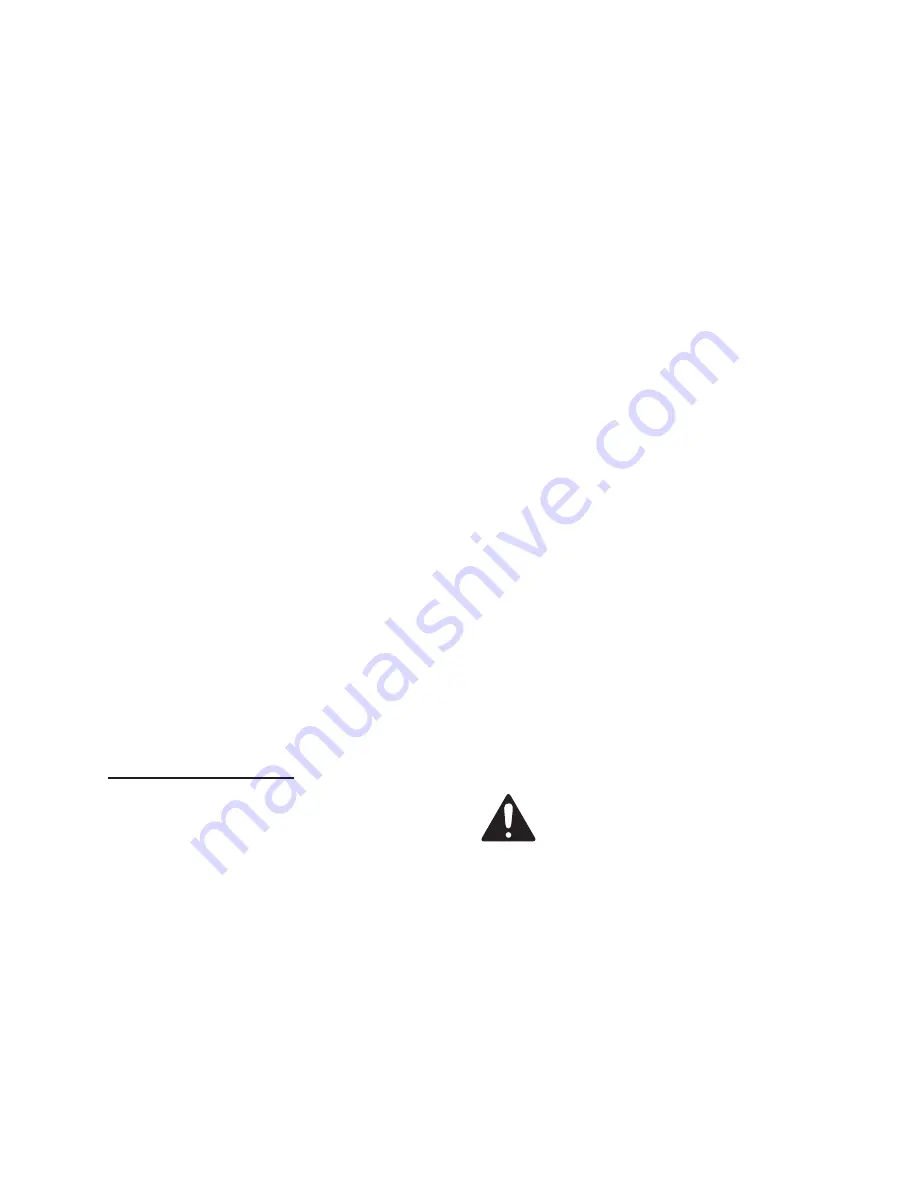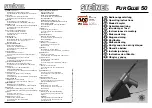
SKU 98917
For technical questions, please call 1-800-444-3353.
Page 6
ductive harm). (California Health &
Safety code § 25249.5,
et seq.
)
5. Only use with accessories rated to
handle forces exerted by tool during
operation. Other accessories not de-
signed for the forces generated may
break and forcefully launch pieces.
6. Attach all accessories properly to the
tool before connecting the air sup-
ply. A loose accessory may detach or
break during operation.
7. Obey the manual for the air compres-
sor used to power this tool.
8. Install in-line shutoff valve to allow
immediate control over air supply in
emergency, even if hose is ruptured.
9. Do not lay tool down until it has com-
pletely stopped. Moving parts can
grab surface and lead to control loss.
10. The pressure setting must not exceed
the job site regulations/restrictions.
11. The pressure setting on any Nailer
should not exceed 90 PSI when
working with workpieces that have a
thickness of less than 1-3/4”.
Vibration Precautions
This tool vibrates during use. Re-
peated or long-term exposure to vibra-
tion may cause temporary or permanent
physical injury, particularly to the hands,
arms and shoulders. To reduce the risk of
vibration-related injury:
1. Anyone using vibrating tools regu-
larly or for an extended period should
first be examined by a doctor and
then have regular medical check-
ups to ensure medical problems are
not being caused or worsened from
use. Pregnant women or people
who have impaired blood circulation
to the hand, past hand injuries, ner-
vous system disorders, diabetes, or
Raynaud’s Disease should not use
this tool. If you feel any medical or
physical symptoms related to vibra-
tion (such as tingling, numbness, and
white or blue fingers), seek medical
advice as soon as possible.
2. Do not smoke during use. Nico-
tine reduces the blood supply to the
hands and fingers, increasing the risk
of vibration-related injury.
3. Wear suitable gloves to reduce the
vibration effects on the user.
4. Use tools with the lowest vibration
when there is a choice between dif-
ferent processes.
5. Include vibration-free periods each
day of work.
6. Grip tool as lightly as possible (while
still keeping safe control of it). Let
the tool do the work.
7. To reduce vibration, maintain tool as
explained in this manual. If abnormal
vibration occurs, stop immediately.
SAVE THESE
INSTRUCTIONS.

































